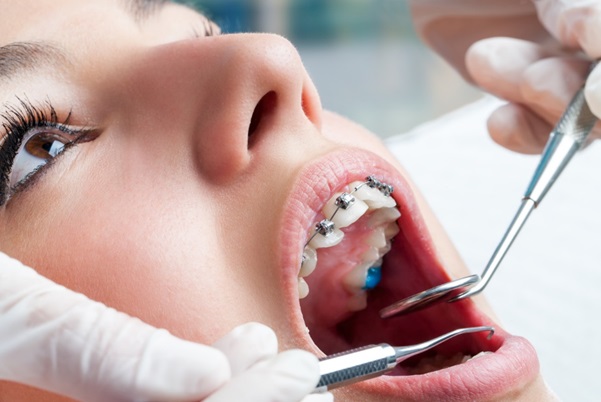Stages of orthodontic treatment + video
Orthodontics is a relatively long-term treatment which, depending on the type of jaw and dental problem and its severity, may last between 6 months to 3 years or even longer. This treatment consists of several general and exclusive stages; that basic stages of orthodonticswill be explained in this article.
Before starting, it is necessary to know that phases of getting braces can be slightly different depending on the purpose of treatment,the desired results, and dental problems of the patient. In other words, if your goal is cosmetic orthodontics, you will not go through the same steps as someone who has severe malocclusion.
Step 1 of orthodontics: Consultation
Among all stages of orthodontics, whether via fixed braces or removable braces, primary consultation is one of the most important steps. During this session,the orthodontist will examine your teeth closely, find their problems, and suggest the best orthodontic treatment to align and straighten them. If all goes well and you choose them as your orthodontist, you will go through the next steps of getting braces.
Step 2 of orthodontics: Determining the type of treatment
As mentioned above, not everyone has underbite, overbite, crowding or diastema , so not everyone will be treated the same. Each patient’s treatment will be exactly tailored to the problem and condition of their teeth.
X-rays will be taken of your teeth for a closer examination and better diagnosis. Orthodontic radiographs make it possible to correct any potential and actual problems before installing orthodontic braces. Therefore, this stage is one of the fixed bases of orthodontic treatment stages.
Notice that although all types of orthodontic treatmentalmostfollow the same pattern, pediatric orthodontic is a little bit different from the adult orthodontics.
Step 3 of orthodontics: Solving dental problems
An experienced orthodontist makes sure of your dental and gingival health before starting the orthodontic procedure. If there be any problem such as cavity, gingival infection or abscess, etc. you will be referred to a dentist or periodontist.
The reason is that if the teeth and gum are not healthy, your orthodontic treatment will not make any sense and the orthodontic procedures will not be completed successfully. And even during the treatment, the teeth may be severely damaged.Also the way of brushing and rinsing the mouth and teeth can be difficult.
Step 4 of orthodontics: Adjusting braces and brackets
This step of orthodontics’ phases (both removable and fixed braces) is the longest. Sincethe process of installing dental braces is a little time consuming and requires high accuracy, attention and skill__it makes this step longer than others. In this session, the surface of the teeth is polished, special wires are passed through your teeth, and based on the determined situations, orthodontic brackets are stuck to the surface of the teeth with the help of special wires.
Step 5 of orthodontics: Wiring brackets
After installing the brackets, it is time to insert the wires into the brackets. The orthodontist selects semicircular wires to connect the brackets; then they determine the size of the wire and bend or cuts it if necessary. After the wires are passed through the brackets, the pressure that these wires must apply to the teeth is adjusted by the orthodontist.
You have to be examined monthly by your orthodontist to replace or adjust the wires if needed. You also may feel a little pain after adjustment or replacement of wires; as pressure is usually applied to the wires and teeth that take a while to get used to, and it is normal to experience discomfort.
Step 6 of orthodontics: Frequent and regular appointments
Throughout your orthodontic treatment, you should attend all the sessions that your orthodontist determines for you. These appointments aim to evaluate and examine you and your dental condition. The orthodontist wants to make sure that your teeth are straight and that there are no problems with you, your teeth, and the braces. If you do not attend these sessions, your treatment will probably be longer, so it is in your best interest to attend all treatment sessions on a regular basis.
Step 7 of orthodontics: removing the braces and adjusting retainer
After the orthodontic procedure is completed and the orthodontic fee is paid, the bracket is removed from the mouth and then the retainer is used to keep the patient’s tooth and jaw in position. Using the retainers is the last stage of braces. After performing all the orthodontic procedures by an orthodontist, the patient can enjoy the beauty of their teeth and smile.

